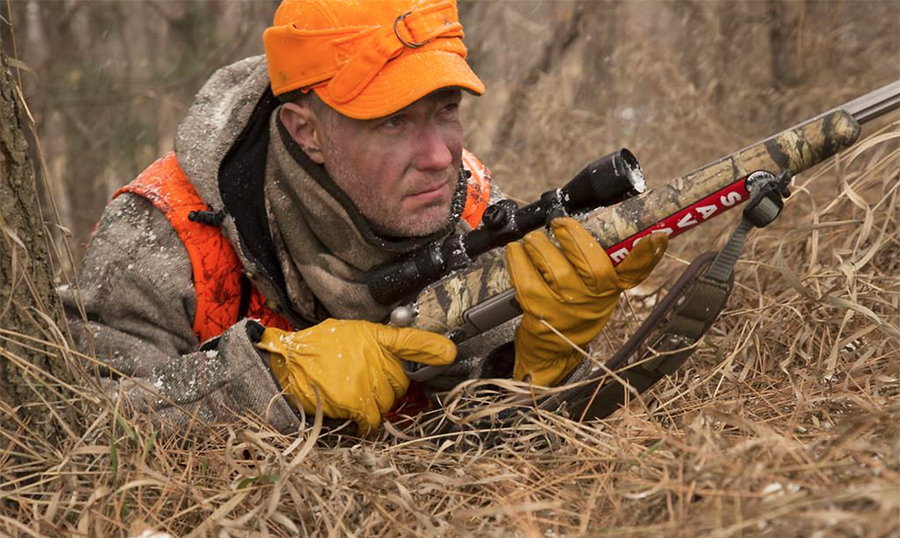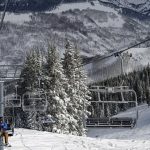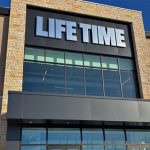S&P raised its debt ratings on Vista Outdoor Inc. primarily due to stronger-than-expected sales for ammunition resulting from increased demand for personal protection equipment amid a politically uncertain environment and civil unrest, along with heightened demand for recreation and hunting.
In a note, S&P said it expects earnings trends to continue to improve through the fiscal year as the ammunition market rebounds from its trough and outdoor segment sales improve with the reopening of the economy. S&P’s issuer credit rating was raised to to ‘B+’ from ‘B’. Concurrent with raising the issuer credit rating, S&P lifted its issue-level rating on the company’s unsecured debt to ‘B+’ from ‘B’. The recovery rating remains ‘3’. The stable outlook reflects S&P’s expectation that the company will maintain leverage of below 4x over the next 12 months.
Vista Outdoor’s brands include Federal Premium, CamelBak, Bushnell, Camp Chef, Primos, Blackhawk, Bell, and Giro.
S&P said, “Our ratings upgrade reflects deleveraging from improved profitability from stronger ammunition sales and debt reduction. Vista’s shooting sports segment experienced substantial growth during the past few quarters, especially the most recent quarter ended June 28, 2020. Organic revenues grew 17 percent in the segment, driven by a 22 percent increase in ammunition sales. The higher sales, along with increased operating efficiency resulted in stronger profitability. For the 12 months ended June 28, 2020, leverage improved to 3.4x from 5.1x for the prior quarter, fiscal year ended March 31, 2020. The sequential profitability improvement was largely driven by a surge in ammunition sales resulting from greater social unrest leading to stronger demand for personal protection equipment, especially firearms. This led to greater pricing power, fixed overhead absorption as plants ran at full capacity, and improved product mix. The company completed its corporate restructuring program in fiscal 2020, which will result in cost roll offs and greater operating efficiency. Additionally, further deleveraging was driven by debt repayment. The company repaid its second-lien term loan in fiscal 2020 and over $60 million on its revolver in the first quarter of fiscal 2021.
“While we acknowledge that the demand surge in ammunition will not last, we expect the company to maintain strong profitability in that segment. Ammunition sales began recovering in the third quarter ended December of fiscal 2020, with a significant surge in sales during the first quarter ended June 28, 2020, driven by increased gun ownership. The overall ammunition market is approaching its previous peak, with current overall domestic industry sales of estimated roughly $2.7 billion compared to about $2.9 billion in 2013. According to data from the National Shooting Sports Foundation, 40 percent of firearm purchases in 2020 have been from first-time buyers. We believe that demand for personal protection during an uncertain political environment will continue to drive sales in the near term. Despite the increase in new gun owners, we believe the greatest risks to the ammunition market are potential stockpiling behaviors and the stickiness of new customers. The 2020 election outcome and gun policies can also affect stockpiling behavior. The company’s precipitous 2.5 year drop in profitability following the 2016 presidential election demonstrates how the political party in office has a direct impact on ammunition demand. Domestic commercial ammunition industry sales declined to under $2 billion in 2018 from over $2.5 billion in 2016 because of high levels of stockpiling.
“While we believe the industry’s production capacity has declined as a whole since the peak, a precipitous decline in demand could greatly affect the company’s profitability and ability to maintain leverage of below 5x. Additionally, if competition intensifies, or if distressed competitor Remington materially reenters the market, or smaller players increase production capacity, pricing could also decline with additional supply in the market. We believe that with the improved near-term profitability, the company has sufficient leverage headroom to sustain moderate leveling off of ammunition demand and withstand an increase in competitionto maintain credit metrics consistent with its current rating. In our base-case forecast we expect margins would have to decline in excess of 450 basis points (bps), meaning EBITDA would return to fiscal 2020 levels before leverage would be around 4.5x. Additionally, consumer sentiment toward firearms and ammunition could be major factors in longer-term ammunition profit sustainability. For instance, in late fiscal 2020, Walmart announced it would no longer sell certain ammunition products in its stores. The company has offset some of this impact by introducing its own direct-to-consumer e-commerce portals.
“Outdoor performance should improve as the economy reopens and consumers engage in more outdoor activities. Long-term growth will depend on consumer discretionary spending patterns. In the near term, we expect positive demand headwinds due to people adopting outdoor recreation activities due to COVID-19 shutdowns of large social venues. Despite this, sales were down 4 percent in first quarter fiscal 2021 due to COVID-19-related store closures and supply chain disruptions. As the economy reopens, we expect improved performance out of Bell and Bushnell Golf. We believe it is too early to determine if there has been a structural shift to more outdoor recreation, and we believe longer term as social distancing measures ease, growth will be driven by improved consumer discretionary spending. However, if a weak economy persists, this segment could suffer.
“We expect the company’s financial policy to focus on maintaining a conservative capital structure, though acquisitions are a possibility. Through fiscal 2020 and first-quarter fiscal 2021, the company has been diligent in repaying debt, lowering gross debt to $444 million for the quarter ended June 28, 2020, from $760 million for the same quarter end a year earlier. It repaid its ABL term loan with Savage Arms sale proceeds, and second-lien term loan and portions of its revolver. We believe improved cash flow generation and revolver availability will provide flexibility for the company to make accretive or growth-enhancing tuck-in acquisitions. The company stated its intention to manage net leverage in the 2x-3x range, while not making any sizable acquisitions. While we have not modeled in any material acquisitions in our forecast, we believe an acquisition funded on its revolver could result in a leverage profile in excess of 3x on an S&P Global Ratings-adjusted basis.”
Photo courtesy Vista Outdoors













